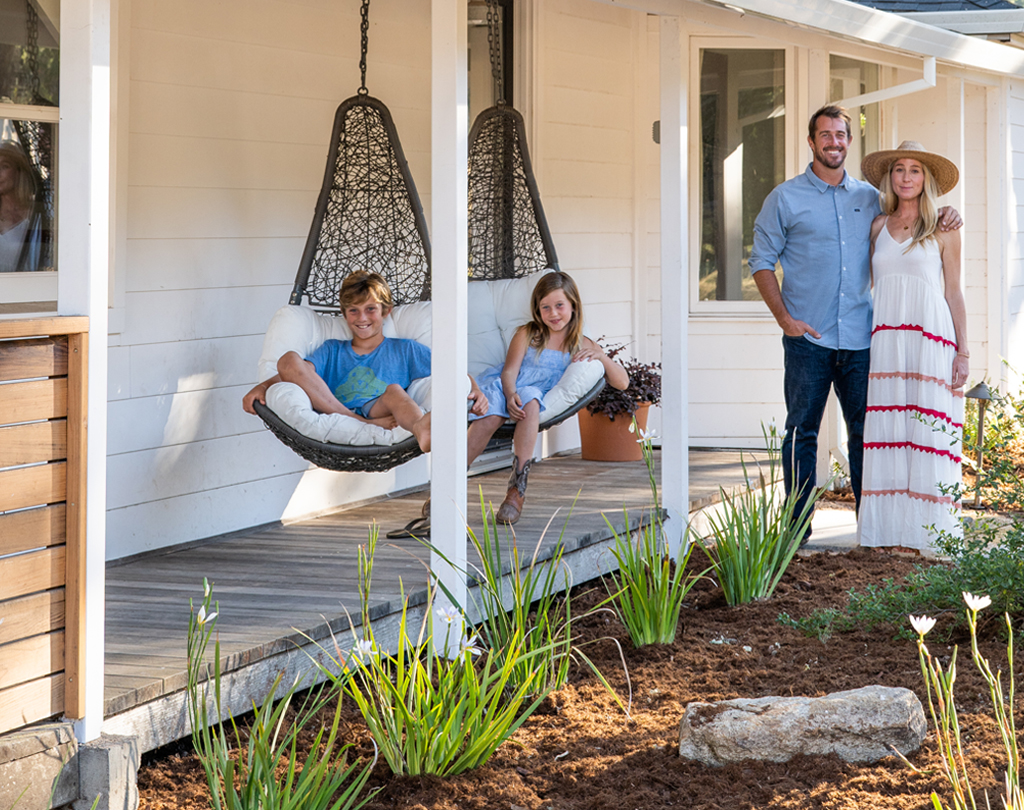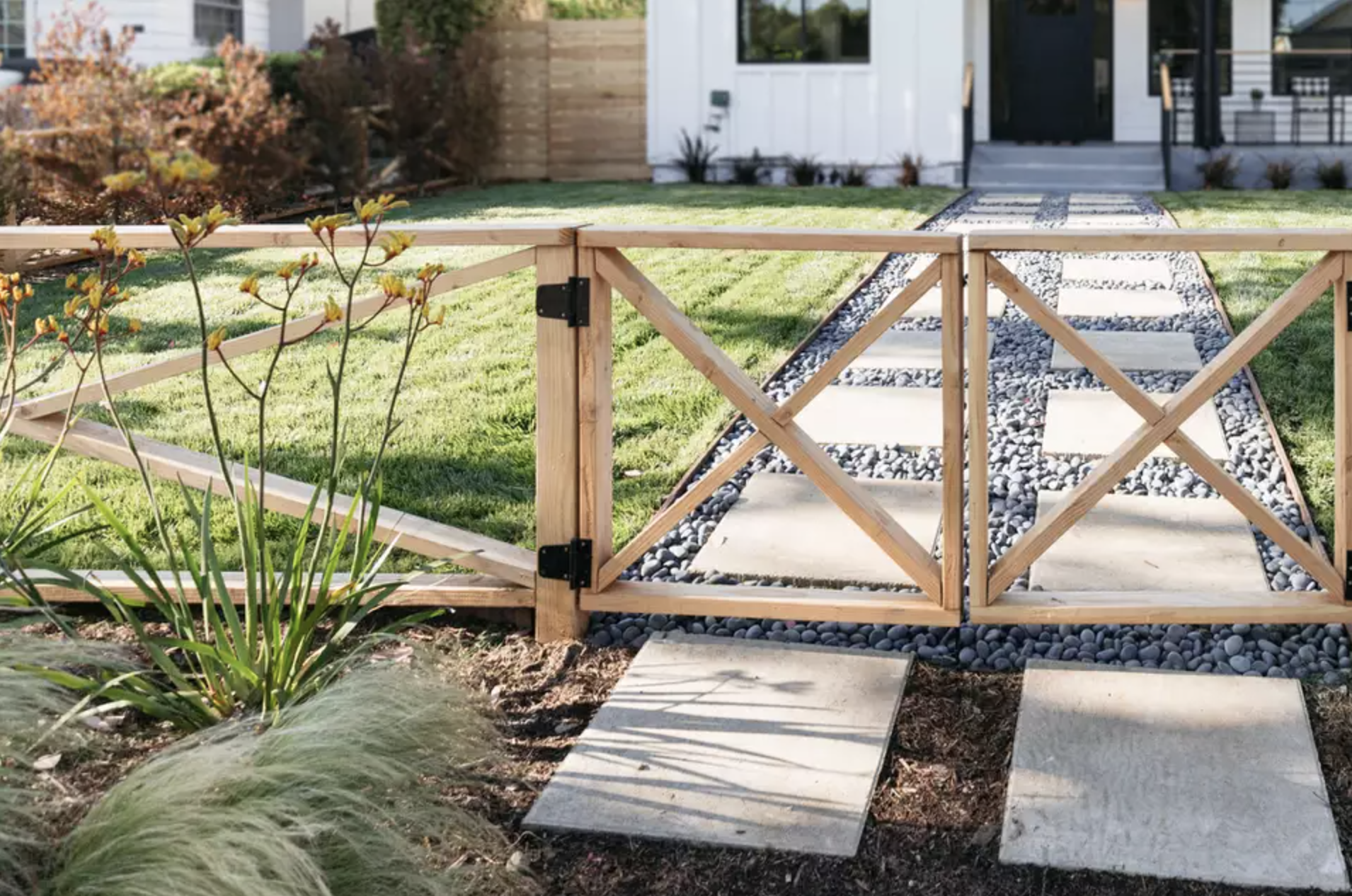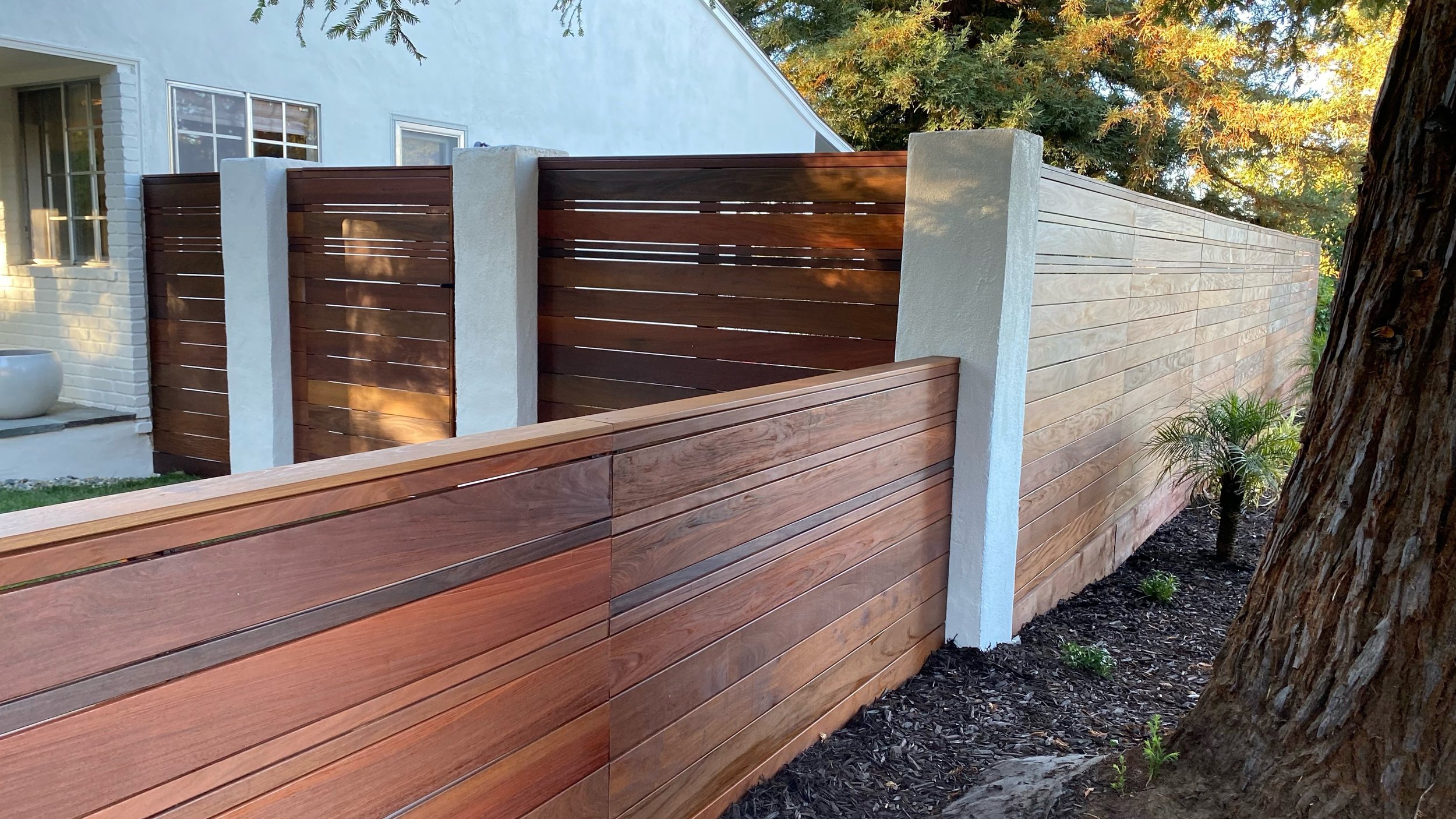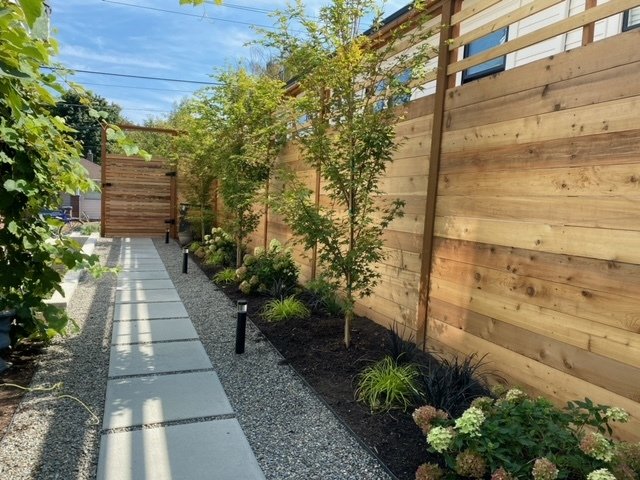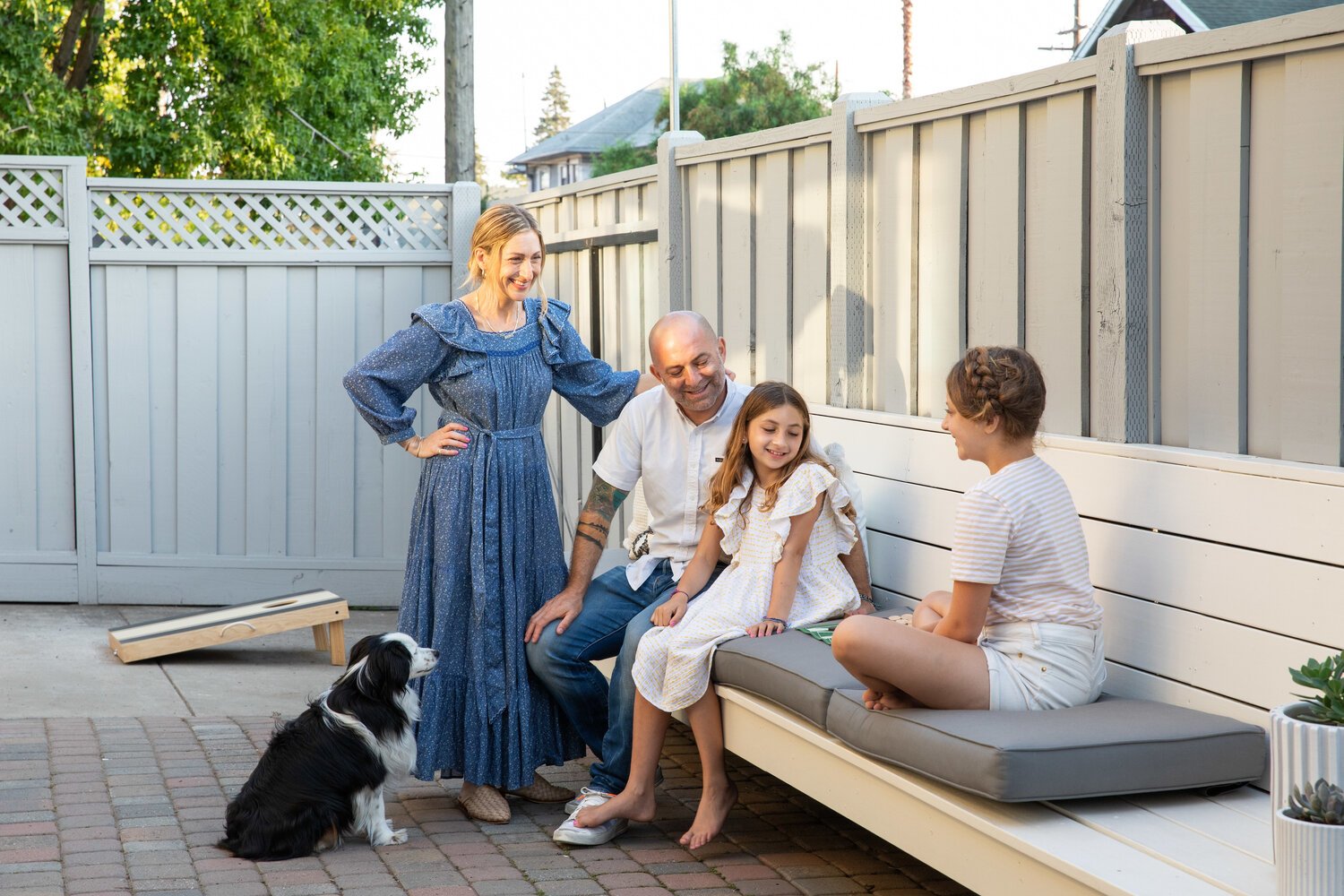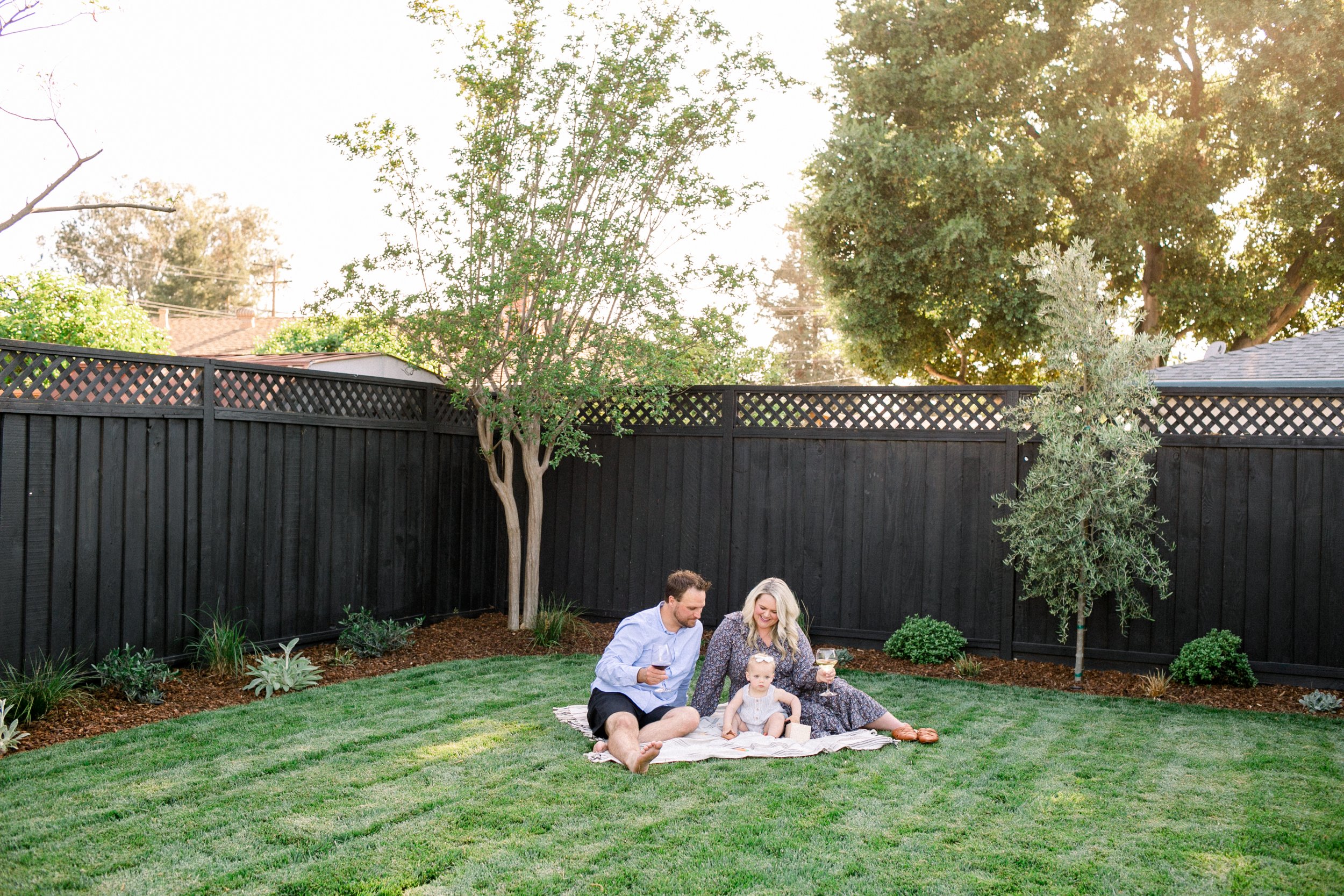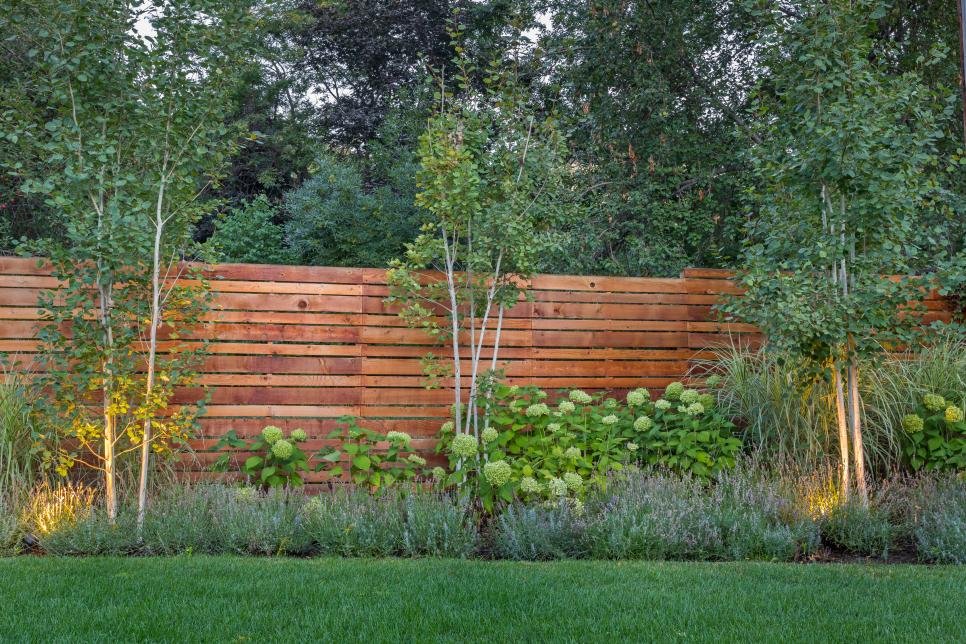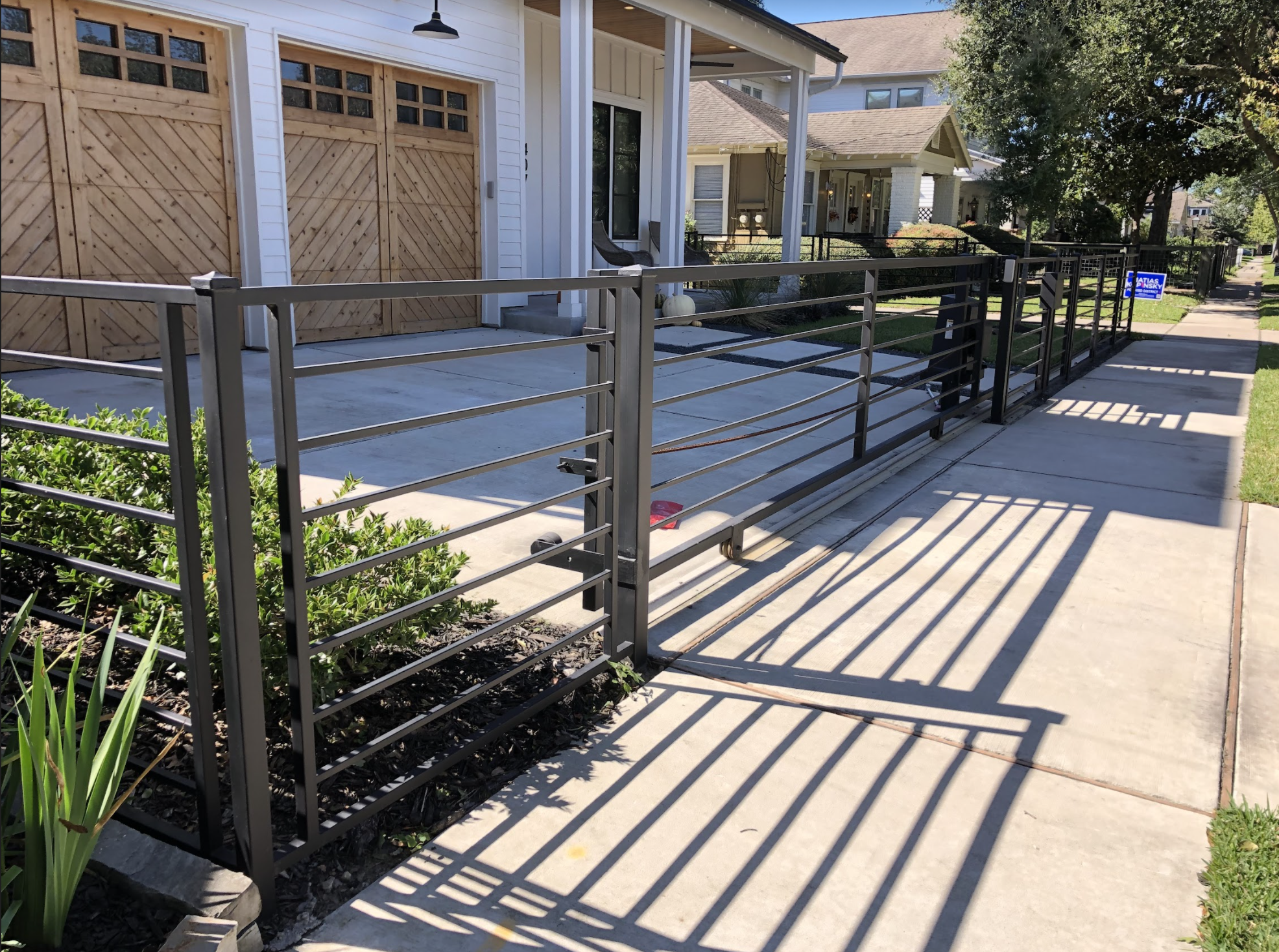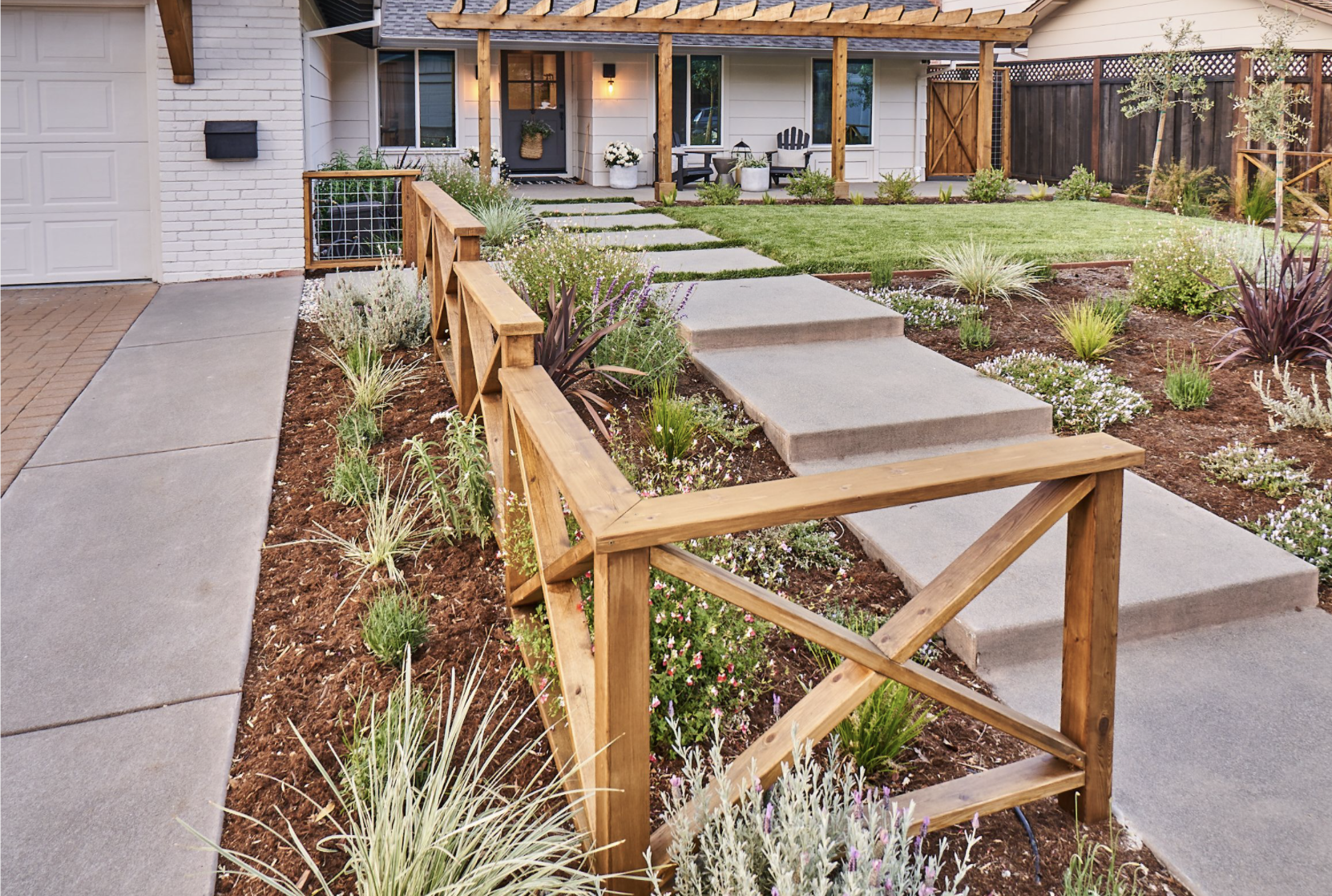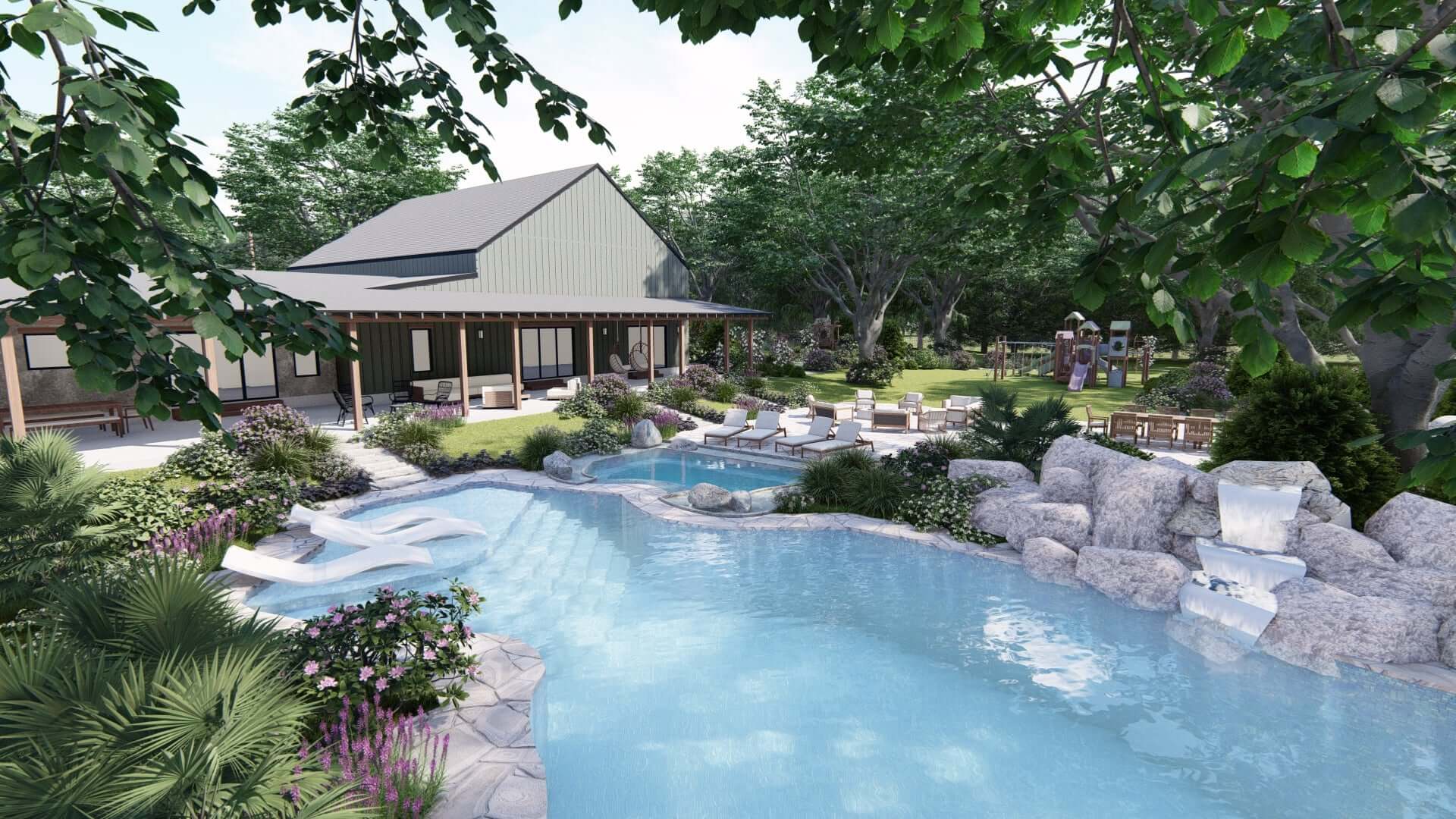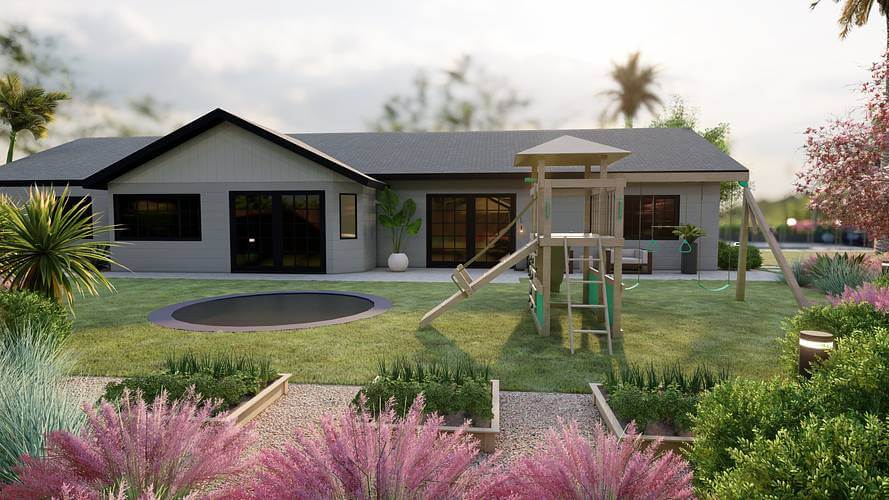
Ready to design your dream yard?
Get StartedFencing can be purely functional, purely decorative, or, as is usually the case, it can fall somewhere in between. We’ll walk you through the need-to-knows of landscape fencing, and offer a few of our own tips about how to get the look and function you’re aiming for.
Get started on your fence design and install today with Yardzen!
A mix of fence heights in this Yardzen front yard
Fence Heights
Height limits are commonly set by local regulations. Front yard fence heights typically range from 3’ to 4’ (we prefer a 40” front yard fence). Side yard and backyard fences are normally 6’ in height, occasionally climbing to 8’. It’s common for up to 18” of lattice to be allowed above a 6’ opaque backyard fence.
A “Good Neighbor” fence in a Yardzen side yard that adds beauty and privacy
Where to Fence
If kids or dogs are an issue, you’ll want to fence your entire property. If security is a concern, full fencing with a taller front yard fence (5’ or higher) and lockable gate is ideal. In this situation, we suggest considering front fencing with some visual permeability to avoid an unwelcoming fortress feel. If none of the above applies, front yard fencing is effectively unnecessary unless you want it for aesthetic value.
Fences running along side and rear property lines are generally a good idea to avoid awkward discussions with encroaching neighbors, especially in dense areas or between smaller lots.
A front yard x-fence in a Yardzen yard that delineates the property while still welcoming friends and neighbors.
Visual Permeability
Opaque fences, where there are no gaps and you can’t see past the fence, increase the sense of privacy and make spaces feel smaller and more enclosed. To the outside world, they signal a desire to be left alone.
Visually permeable fences, where you can see through gaps in the fence, make spaces feel larger and more open, and project a more welcoming feel to the neighborhood.
Whether to use opaque or visually permeable fences depends on your design goals. The privacy of backyards typically calls for an opaque fence. Unless front yard privacy is a concern, we encourage clients to use visually permeable front yard fences, both to expand perceived space and to more warmly engage the surrounding neighborhood.
Pro Tip: If you’re looking for a halfway point between openness and enclosure, grow a vine to cover some of the gaps in a visually permeable fence. Go with a native vine and you may get some butterflies in your yard as a bonus.
A black-stained wood fence in this Yardzen front yard
Materials
Material selection is foremost a durability concern. Choose materials that are suitable for your local climate. Areas that are particularly arid or wet may want to avoid wood due to increased weathering rates.
Materials do influence style, but wood and metal, the most common fence materials, tend to be fairly style agnostic – it’s the form in which they are presented that really expresses style.
Style
Fences with more ornamentation – post caps, pointed pickets, decorative top rails – evoke a more traditional feel. Fences with no ornamentation – minimal post caps, unadorned joints, no twists or points – look more modern. Fences also tend to look more modern when they include parallel horizontal lines or wire grids.
Of course, fences are not restricted to modern or formal – there are tons of fun designs that blend modern and traditional style indicators. Here are a few fence styles we love, along with some rough pricing (note that prices do vary significantly with region, material availability, and labor costs):
A vertical fence painted in an off-white for Shira Gill. (Read the blog post!)
A black-stained vertical fence in a Yardzen yard
Vertical Board: $90 per linear foot
Cost-effective yet handsome. Suitable to almost any style.
A simple coat of paint or stain elevates the look of vertical boards.
Paint or stain helps a fence to become invisible while emphasizing adjacent planting – think of a black curtain at the back of a stage.
Use this approach around the entire side and back yards.
Add 4” gaps between the boards if using as a front yard fence.
Tip: Read Shira Gill’s blog post about how painting her fence transformed her backyard.
Backyard horizontal fence
Horizontal fence in this Yardzen front yard
Horizontal Board: $120 per linear foot
A modern, showpiece style best suited to short runs in high visibility areas.
Typically built with hardwood or standard wood stained to hardwood tones.
Install with uniform, narrow gaps, or gapless.
Mixing board sizes adds interest, but it also adds expense. If playing with size, don’t get carried away.
Backyard hogwire fence in a Yardzen yard
Front yard hogwire fence in a Yardzen yard
Hogwire: $90 per linear foot
A versatile and reasonably priced alternative
Suitable for modern farmhouse or rustic traditional designs, but best avoided in fancier contexts – it’s charming but a bit rough around the edges.
Visually permeable but child and dog proof – a great option when you need to balance containment with an open, welcoming feel.
Paint the frame to spruce it up, or leave it as natural wood for a more rustic feel.
Generally best for front yards, but appropriate for backyards that do not abut other homes.
Horizontal modern fence in a front yard
Hogwire metal fence in a front yard
Modern Metal: $150 and up per linear foot
There are MANY metal fence styles out there, but we prefer it when they keep things clean and simple.
These examples take different approaches to infill – chunky vertical pickets, slender horizontal pickets, tight wire grid – but each one offers a visually permeable, contemporary look.
The black color draws attention to the yard rather than the fence.
Suitable for short front yard runs, but not recommended at taller heights or to wrap an entire property.
An x-fence in a Yardzen front yard
X-Fence: $60 per linear foot
Not suitable for containing kids or dogs (clearly), but uber-welcoming and great for folks who are neither all the way modern nor all the way traditional.
This style takes the openness of ranch-style split rail fencing and dresses it up with some fancier carpentry, creating a tidy but comfortable vibe.
It feels very at home with a white coat of paint, and loosens up a bit when adjacent planting reaches through its gaps.
Our Advice
Start with a fence design and hire a professional. Fences are an expensive but necessary part of many landscaping projects. Ensure success by hiring professionals to both design a fence that achieves your style and budget goals and install the fence. Get started with Yardzen today.
Keep it simple. Complex fencing designs quickly ratchet up costs, and can become a distraction from the broader yard. A bit of loud fencing can be great, but in general, make your fence a background element, not the star of the show.
Keep what works. If your existing fencing is structurally sound and just needs a facelift, try a new coat of paint – this is far more cost-effective than replacement, and saves budget for use on higher priority landscape features.
Spend for Impact. It can be worth going for more elaborate fence designs when they’ll deliver a big visual impact. Find the key views where a bit of fencing can elevate the entire yard, and target your spending there. Don’t bother building fancy fences where they won’t be frequently seen, such as in side yards or behind dense planting.
Be consistent. It’s ok to use two different fence styles on a property, but we generally recommend stopping there. Pair a showpiece style with a complementary workhorse style, and apply them where appropriate.
Ready to design your dream yard?
Get StartedFeatured Articles
How an Interior Designer Created “Outdoor Rooms” in Her Yardzen Yard

The Best Outdoor Cold Plunge Tubs & Ice Baths in 2024 (Chosen by Our Client...

Our Dreamiest Plunge Pool Yard Designs
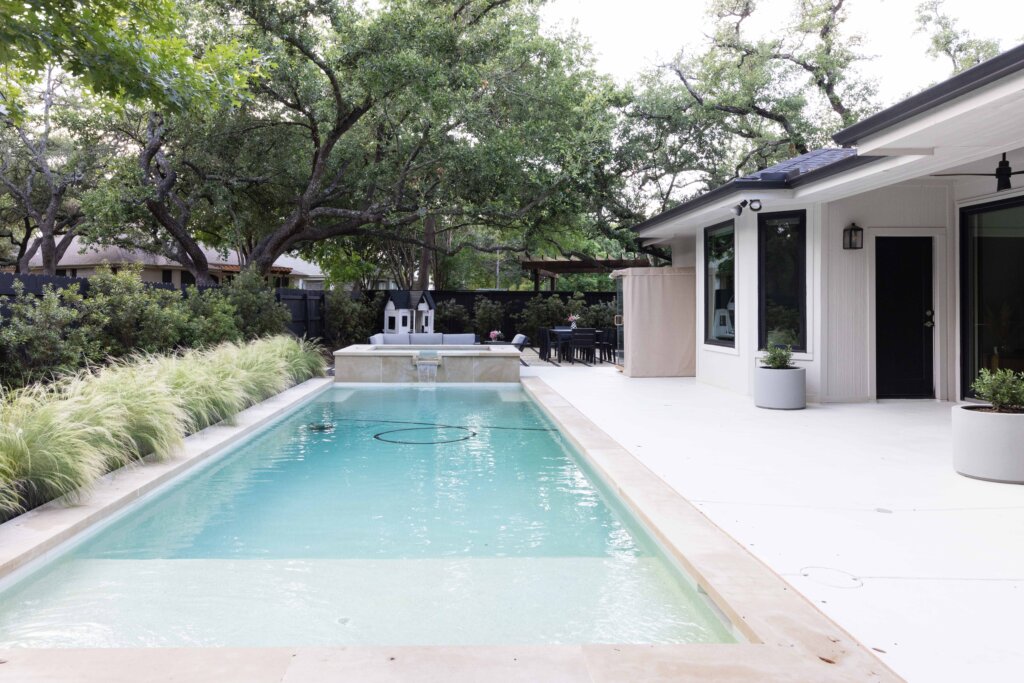
Our Favorite No-Grass Front Yard Ideas

